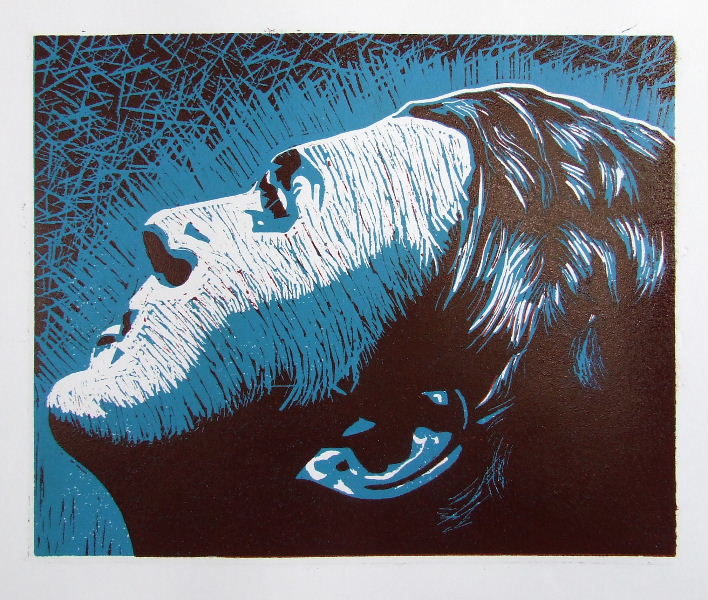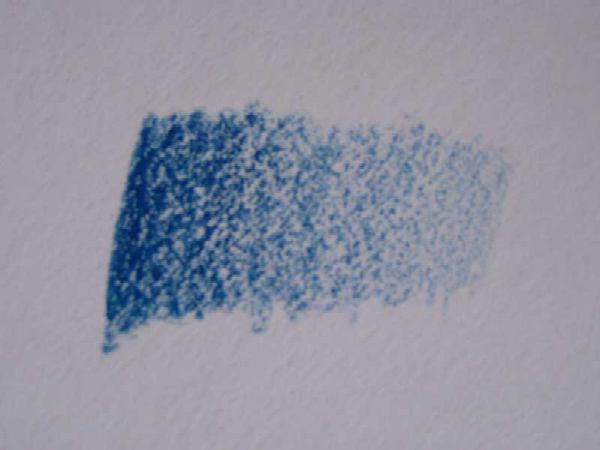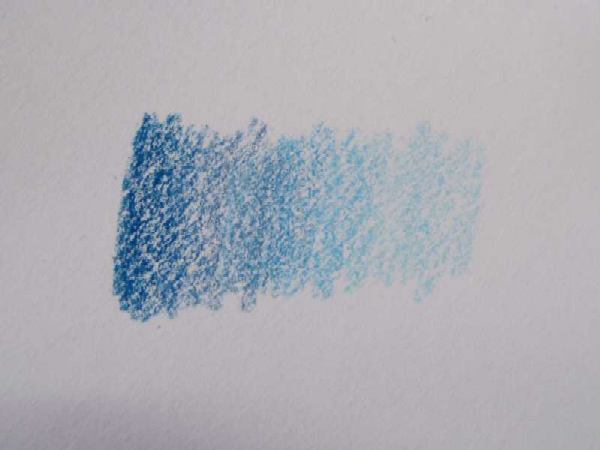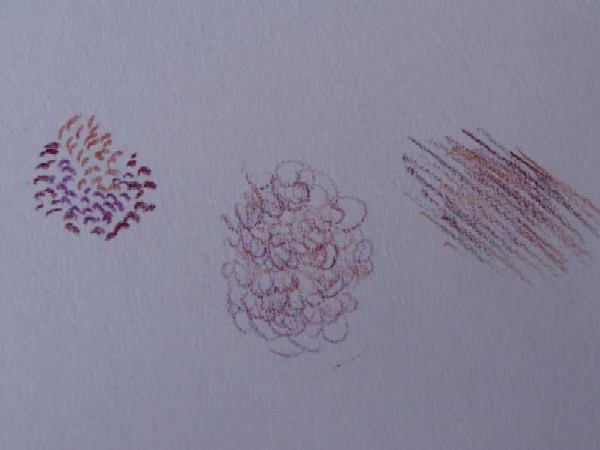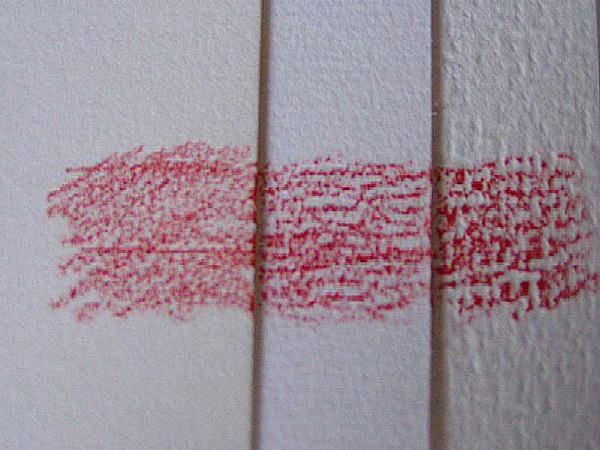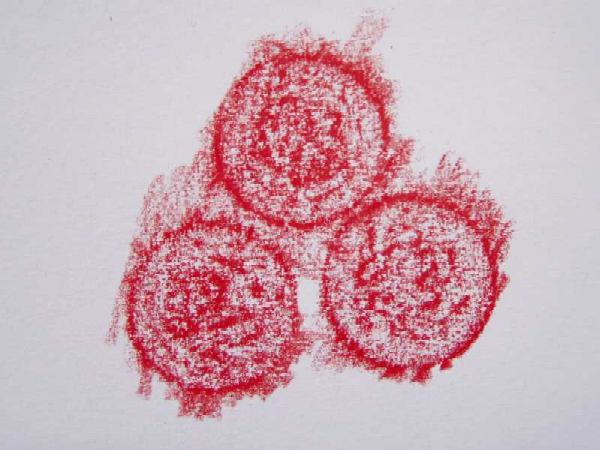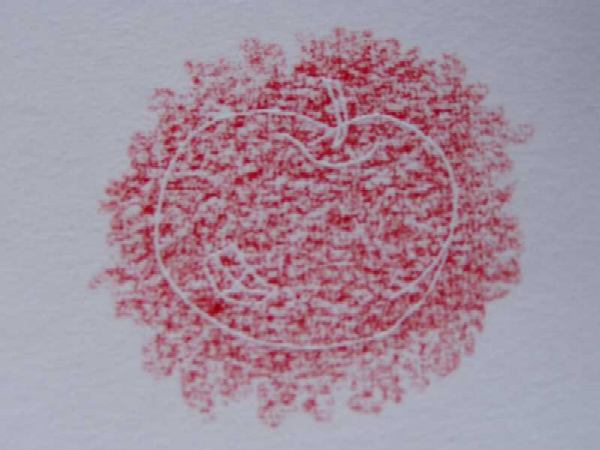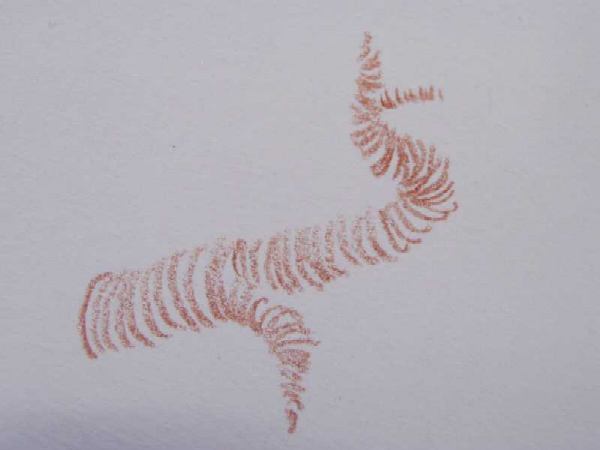| Color Gradients: |
Gradients of 1 hue; you can create gradients of 1 hue by pressing harder or softer on your pencil when coloring. Pressing harder releases more pigment from your pencil, resulting in a darker color..
|
| Gradients by mixing light and dark shades; you can also obtain gradients of 1 hue by blending pencils in the same color range, allowing them to transition into each other or by using "feathering" or pointillism. However, you should choose colors that are in the same tonal value. |
| Adding Texture: |
Varying texture; by applying different types of hatching and scribbles, you can suggest texture. By spacing the scribbles closer or farther apart, you can also create light-dark differences.
|
Working on textured paper; there are many types of paper, and the paper's texture affects your drawing. You can see the paper's texture through the colors. Watercolor paper comes in many different textures and is very suitable if you want to draw on a coarse surface.
|
Rubbing; with rubbing, you use the texture of various materials and transfer it to your paper. To rub, place the paper on the material, then fill in the color areas. This can be flat or by hatching. Pointillism does not work with this technique. You can still vary by pressing harder or softer on your pencil. Rubbing works best on not-too-thick paper.
|
Blind pressure lines; by scratching paper with a hard pointed object, so-called pressure lines are created. Normally, these lines are hardly visible, but by coloring a surface with these lines, they become visible. The pencil and thus the pigment cannot enter these lines, so they retain the color of the paper.
|
| Arcing with the shape; you can suggest structure by arcing with the shape of the object you're drawing. In the picture next to this, the hatchings suggest tubular shapes, branches in this case. |
Preserving and Protecting Artworks:
- Spray/fix; drawings, especially if you've also used pastels, are vulnerable. You can treat them with fixative to protect them. Moreover, especially dark colors of wax pencils have the property that a light layer of wax forms on top of the color. To prevent this, you can also spray the work with fixative.
- Dry; always store drawings in a dry place.
- Flat; preferably lay drawings flat, in a dedicated folder with protective sheets between the various drawings. You can use crystal paper for this, but also a very cheap thin type of paper. This is mainly to prevent the colors of drawings from transferring to each other.
|



